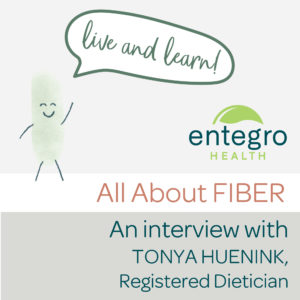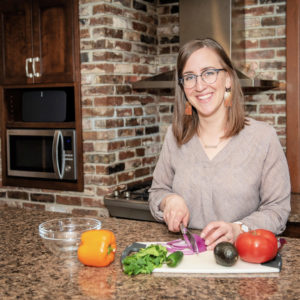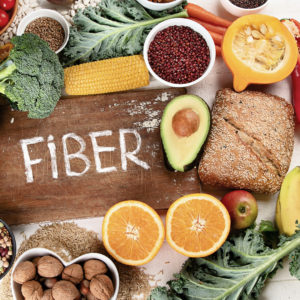All About Fiber
Live & Learn – All About Fiber with Tonya Huenink, RD

In this excerpt of our interview series, Live & Learn, we talk with Registered Dietician Tonya Huenink, creator and owner of Meal Squeeze – the family meal planning service. She talks about gut health, fiber, and simple ways to support our friendly bacteria with the food we eat.
As a dietician, why is gut health important?
“To me, good gut health means you are effectively digesting and absorbing your food, you have a healthy microbiota, your immune system is working well, and you have a good quality of life.
A healthy gut needs the proper balance of good bacteria and other microorganisms that help break down your foods and synthesize vitamins.”

What are the different types of fiber and where can they be found?
“There are two types of fiber: soluble and insoluble.
Soluble fiber dissolves in water and creates a soft, gel-like substance in the colon. It’s found in foods like oat bran, nuts, seeds, beans, lentils, fruits and vegetables. It is most well-known for helping to manage cholesterol and softening stool to make bowel movements easier to pass. It also helps to slow down fat absorption, stabilize blood sugars, and acts as a food (or prebiotic) for healthy gut bacteria.
Insoluble fiber doesn’t dissolve in water and helps to bulk up the stool and keep the waste moving through the bowels more quickly. It’s found in foods like whole wheat, wheat bran, and whole grain products and vegetables.
Both types are important. Foods high in fiber help you feel more satisfied after a meal and can keep you feeling full longer. They can also help lower the risk of certain diseases, like cardiovascular disease, diabetes, and metabolic syndrome.
Aim for 30 grams per day, with about 8 grams coming from soluble fiber. Many foods have a combination of both types of fiber. For example 1 cup of oatmeal has approximately 2 grams of soluble and 2 grams of insoluble. Just one cup of oatmeal and ¾ cup black beans meets the soluble goal for a day.”

How might I introduce more fiber into my diet?
“When striving to increase intake, it’s important to go slow. Increasing too quickly can lead to gas, bloating, and pain. It’s also possible to become constipated if you don’t drink enough water, so you want to make sure you ramp up your water intake as you increase fiber.”
Learn more about fiber and receive a coupon code for the dietician approved meal planning program here.
Interview by Lorilyn Van Dyke, Entegro Health

 New customers! Get 11% OFF your first Flourish order with Code FRESHSTART11
New customers! Get 11% OFF your first Flourish order with Code FRESHSTART11